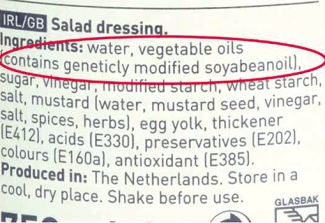
As early adopters of technology, we like to quote William Gibson and say the “future is here, it just isn’t evenly distributed yet.” We position ourselves to preview the next good thing. And from the height of our vantage point, we look out over the crowd and smile knowingly. This next new thing will eventually be much more evenly distributed. The crowd, minding its own business, seems unaware of what’s about to happen to it. In the movement of that wider distribution, some small number of people will be made very wealthy. Soon just about everyone will be using this new thing, and we’ll be on to the next thing.
Reading through the front page of the Saturday New York Times, a couple of stories struck me as auguries of coming ways of life. Neither of these stories had the sweet taste of a fruit yet unknown to the wider populace. Instead they’re bitter moments that speak to an accommodation to our environment.
In the first article, titled “Traveling Light in a Time of Digital Thievery“, Nicole Perlroth writes about the travel routine of Kenneth G. Liberthal of the Brookings Institute. When he travels to China he makes very strong assumptions about the agency of the Network in that locality. Here’s Perlroth’s description of his protocol:
He leaves his cellphone and laptop at home and instead brings “loaner” devices, which he erases before he leaves the United States and wipes clean the minute he returns. In China, he disables Bluetooth and Wi-Fi, never lets his phone out of his sight and, in meetings, not only turns off his phone but also removes the battery, for fear his microphone could be turned on remotely. He connects to the Internet only through an encrypted, password-protected channel, and copies and pastes his password from a USB thumb drive. He never types in a password directly, because, he said, “the Chinese are very good at installing key-logging software on your laptop.”
When we think about the texture of the Network, we tend to think of it as a passive medium–something we can turn on or off. We access it, it doesn’t access us. It’s only in paranoid fantasy that invisible forces invade our minds and steal our thoughts. However, as we augment our minds with hard drives, memory sticks and cloud-based storage, we create an external readable repository of our internal mental space. Our use of common wire protocols allows for broadcast over heterogeneous networks of networks. Entities large and small have the same potential to reach a mass audience.

The two-way web is described as a democratizing feature of the Network. No longer are we the passive recipients of centralized broadcasts. Each node on the Network has both receiving and broadcast capability. But once that two-way channel has been established, the Network also has access to you. A common response to this kind of environment is to say, “well, I don’t have any secrets. I don’t have anything of real value; what’s there only has meaning to me.” If we take this attitude and overlay it onto the whole of society, we conclude that it’s okay if the Network accesses our personal data because no one keeps anything of value in these repositories. And this says something very interesting about where we think value is located.
Today, we look at Liberthal’s seemingly paranoid behavior with his connected devices as an oddity. But as we look at this story, what if we apply Gibson’s maxim? The future is here, it just isn’t evenly distributed yet.
The second article is by Michael Wilson and is called “In a Mailbox: A Shared Gun, Just for the Asking.” Police forensics labs are finding more and more ballistics matches for “community guns.” A single gun is used by many different criminals in many different crimes. Here’s Wilson’s description of a shared gun used in a recent murder.
Waka Flocka is the name of a rapper. But to these men, the phrase described something else.
The community gun.
Hidden and shared by a small group of people who use them when needed, and are always sure to return them, such guns appear to be rising in number in New York, according to the police. It is unclear why. The economy? Times are tough — not everyone can afford a gun. “The gangs are younger, and their resources are less,” said Ed Talty, an assistant district attorney in the Bronx.
The example of the “community gun” brings to mind John Thackara’s discussion of real-time dynamic resource allocation in his book: “In The Bubble: Designing in a Complex World.” The average power tool (a drill, circular saw, etc.) is used for ten minutes in its entire life. But to manufacture that tool takes a tremendous amount of resources. Yet, we all need our own power drill because we never know when we’ll need it.

We can imagine a world where people don’t buy individual power drills, but instead make use of a community drill. The obstacle that stands between that world and this one is generally described as a failure of moral will. We know the right thing to do, but somehow, we aren’t ready. We find ourselves in the position of St. Augustine when he prays, “God, make me good. But not yet.”
Sharing and community seem to be attributes of a positive morality. When we see the commercialization of these qualities, we believe their moral quality suffers. We react to the commercialization of Christmas by attempting to retrieve what we imagine is an historical original experience. We react to the automation of sharing and community by Facebook by turning off our connected devices and attempting a direct connection without digital mediation.
Bad people are greedy, they aren’t willing to share. They don’t form cooperative communities where resources are shared to the benefit of the whole group. To some extent, this is how we determine who is bad and who is good. What would it mean if “sharing and community” were detached from our ideas about positive morality. Both movies and murder are better with community and sharing. Perhaps we should stop for a moment and ask: what’s the meaning of the word “better” in the previous sentence?
Both of these stories made the front page of the Saturday New York Times. The story about paranoid connected device behavior was just above the fold. The community gun story was below the fold. Neither story will receive broad coverage from other media outlets. It’s unlikely that either story will achieve viral distribution over the real-time Network. Both provide a vision of a future that’s not broadly distributed yet. They’re morality tales of the Network. They tell us something about the world we’re creating for ourselves. Or instead, maybe we should say, this is the new world that is manufacturing new varieties of humans.









